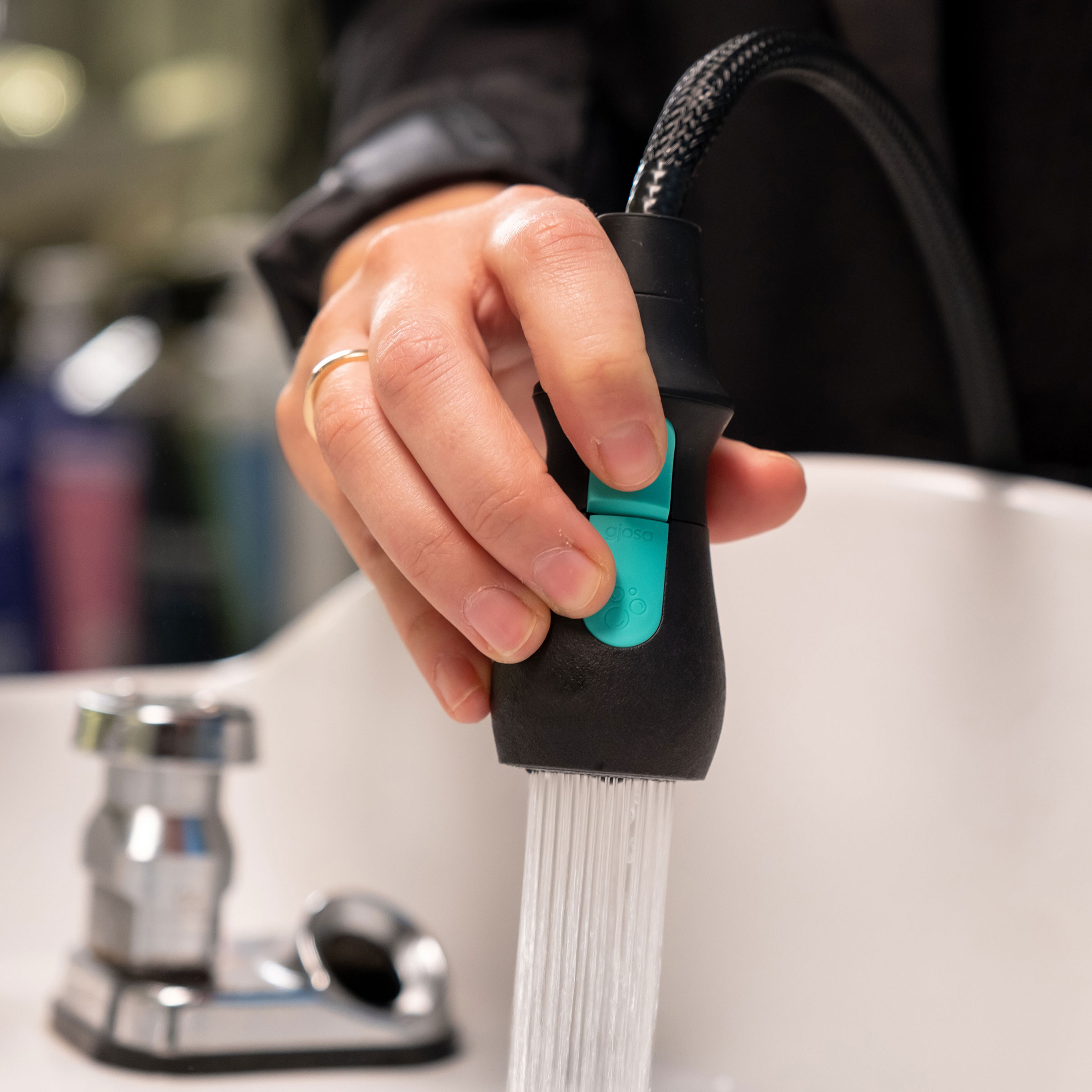Water scarcity has become an urgent environmental issue and will become even more urgent as the consequences of climate change manifest themselves further. At L’Oréal we believe that water is a precious resource and should not be wasted and that this concern is becoming ever more critical.
This belief is one of the drivers of our global sustainability strategy L’Oréal for the Future. We have spent the last ten years driving an in-depth sustainability transformation across our activities, operations, research and products design, in order to reduce the environmental impacts across the entire lifecycle of our products.
The water challenge
How to reduce the ecological footprint of personal hygiene? Across the full lifecycle of haircare products, the use by consumers (i.e. showering and rinsing) represents 73% of water consumed and 83% of the CO2 emissions. Significantly reducing the water usage for showering and rinsing would have a huge impact on the sustainability of personal hygiene – far beyond the L’Oréal product range.
We have made a big step towards this goal by developing a sustainable and innovative shower system with the highest water and energy efficiency: the L’Oréal Water Saver. By partnering with Gjosa – a Swiss start-up created in 2016 – we have developed a technology for hair-care salons that reduces the water and energy consumption of hair washing by up to 65% as compared to conventional systems, and yet delivers a similar experience to customers. While a classic showerhead delivers about 12 liters of water per minute, Water Saver can limit it to less than 7 liters.
The technology behind it makes use of kinetic energy (being a function of mass and velocity). Our showerhead is designed to favor speed over mass. The technology consists of highly precise water collisions, creating micro-drops at increased speeds. The water-drops are fragmented and become finer and propelled at high speed, at 40-50 km/h that means fewer but stronger water drops. TIME magazine listed this amongst the Best Inventions 2021.

Recognising and seizing opportunities
Paving the way to disruptive solutions allows us to anticipate our consumers’ changing demands. Over the last years we had reshaped L’Oréal’s Research & Innovation organisation and resources, to allow us to better detect, select and transform external technologies & innovation opportunities into successes. Our R&I teams seek out innovations that can overcome the technical design barriers intrinsic in beauty products & services, in a mode of push and pull, whilst anticipating how beauty expectations and practices will evolve in the future. This is supported by BOLD, L’Oréal’s venture capital fund, whose purpose is to pursue minority investments in promising start-ups across the beauty value chain.
Our team had already identified Gjosa was one of the deep-tech start-ups we could partner with, but the innovation potential of its Water Saver Solution was detected while working on a different topic with Creaholic, an “innovation factory” made up of a team of experts across a wide range of industries, focused on new solutions and new areas of growth.
The disruptive innovation team who had scouted Gjosa were then followed by L’Oréal Research & Innovation’s Open Innovation Team who continued to mine the concept and also structured the collaboration with the start-up. As a rule, L’Oréal always tries to pair a start-up with the internal team that has the most relevant experience and expertise. Once there was a proof-of-concept with Gjosa, it remained difficult to convert the technology in a product application. L’Oréal’s Augmented Beauty team (specialised in tech and in converting proof of concept into market launches) stepped in, providing more business support, and worked with Gjosa to develop a product that could go-to-market.
All L’Oréal teams working with Gjosa shared the same philosophy. Rather than establishing a client-supplier relationship with Gjosa, they cultivated a mutually beneficial, collaborative and partnership-style approach: Gjosa shared the theory behind its water technology and L’Oréal brought to the table its market knowledge, marketing and communication inputs. L’Oréal decided to acquire a 15% minority stake in Gjosa SA, via its BOLD fund.
The L’Oréal Water Saver was piloted in hundreds of hairdressing salons, undergoing a few iterations. It was launched in late 2022 by the L’Oréal hair-salon brand, L’Oréal Professionnel. It will be sold exclusively to hair salons. Thanks to the combination of the Gjosa technology and L’Oréal state-of-the-art haircare formulas, the Group will continue to develop this strong co-innovation in the months and years ahead.
What we’ve learned
Although Water Saver is living up to its promise, the process of converting the prototype into a product was quite a learning curve for both the teams of L’Oréal and Gjosa. The learnings will serve L’Oréal for its future innovation work-streams: We learned to look outside our core business and be open to new innovation avenues and future business opportunities. Showerheads is not one of our lines of business, so we needed to take the time to acquire a better understanding of the market and how to market these types of products. It’s about speaking the same language as our partners. When working with deep tech start-ups, we involve a team with a strong tech background rather than one in the beauty industry. We share time with the start-up in a joint lab.
As a message to policymakers: in our case prototype testing was a key factor to success, and it was crucial that we could do this under market-like conditions. This is an area where policymakers could open up possibilities to make Europe more innovation-friendly.

